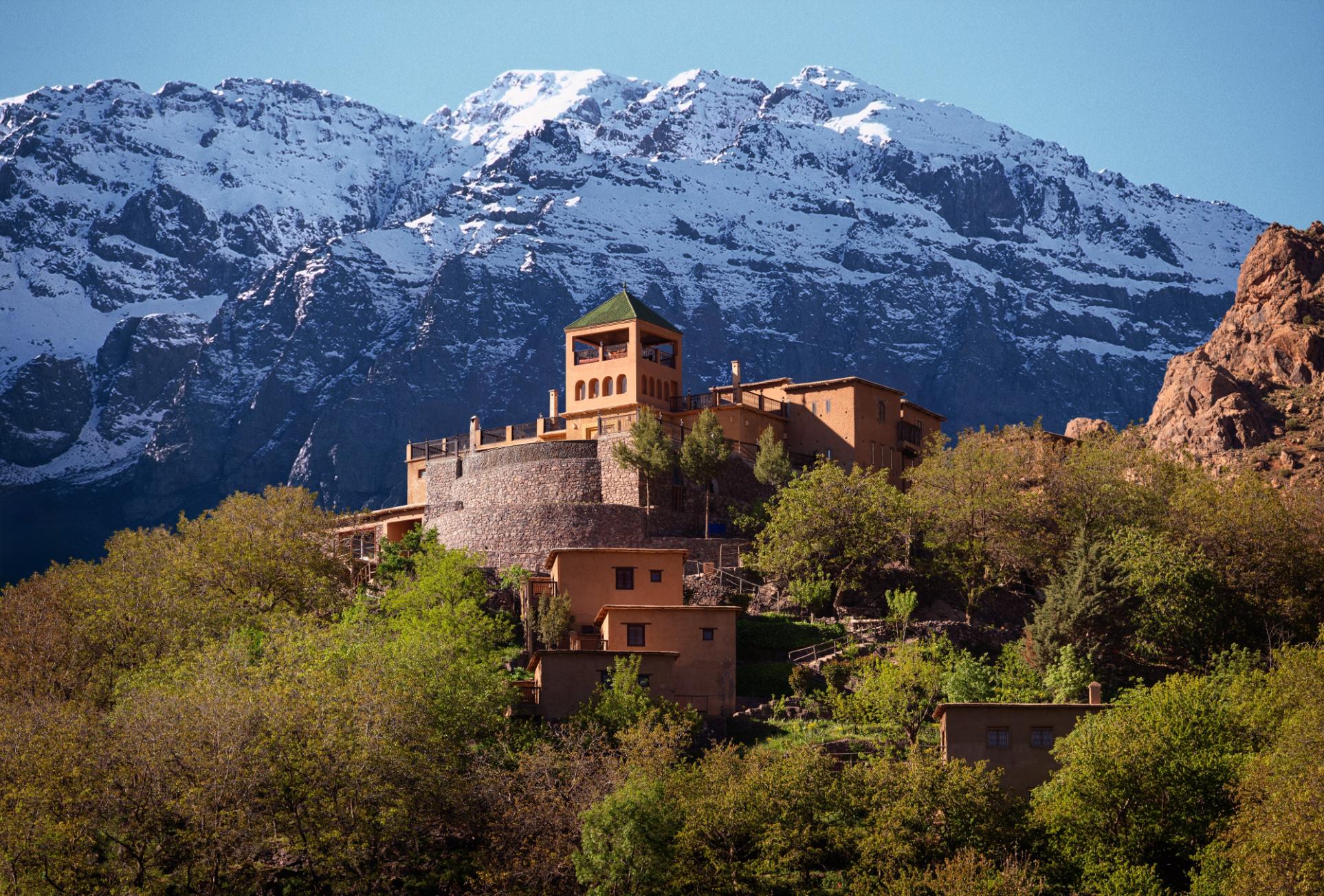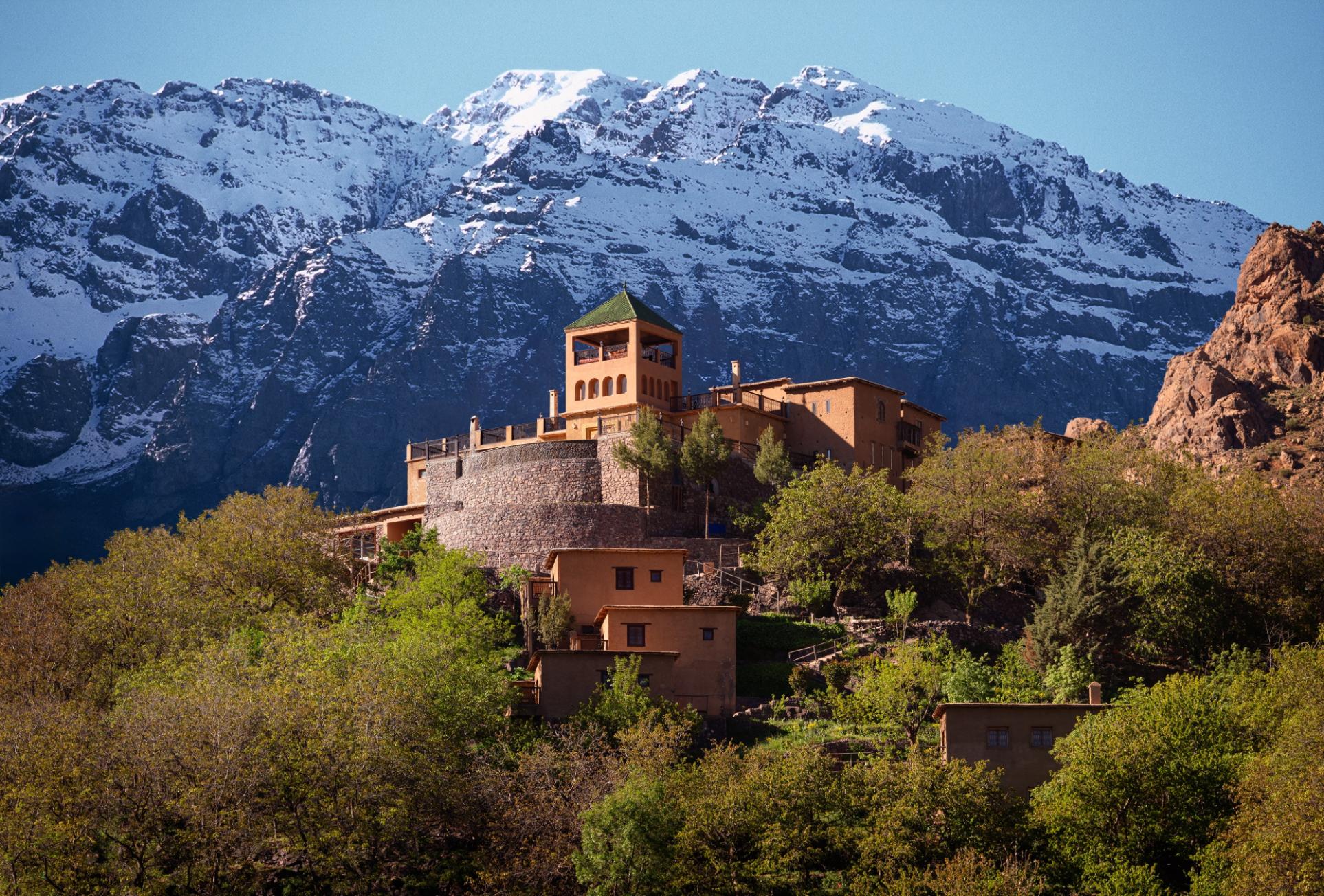
Kasbah du Toubkal is perched on a rocky outcrop above the town of Imlil, in Morocco’s Atlas Mountains. It’s an imposing building, with thick sandstone walls and square turrets. The towering peak of Mount Toubkal, North Africa’s highest mountain at 4,167m (13,671ft), provides a rugged backdrop.
To reach the kasbah you’ll need to walk up a steep dirt track from Imlil, while your luggage is carried by mule. Upon arrival, you’ll step through a solid wooden door in the external walls and walk through lush gardens to the communal lounge area, with low wooden tables surrounded by richly patterned cushions.

Here you’ll receive a traditional Berber welcome of dates and milk, following which you’ll be shown to your room. A lot of visitors come here to hike—after a long day on the trails there's nothing better than a soak in the hammam, lounging by the pool or soaking up the views of the surrounding mountains on the sun-drenched roof terrace.
“Condé Nast said we have the best rooftop views in North Africa,” says Mike McHugo, the hotel’s owner. “The internal windows also look out at the mountains.”

Mike runs an adventure travel business, which organises field trips and hikes for schools in Morocco and France. He and his company (a small group of friends and family, including his brother Chris) bought the Kasbah du Toubkal in 1994, when it was little more than a ruin.
Initially restored and run as a field centre for schools, it gradually transformed into boutique hotel, attracting hikers who want to explore the surrounding High Atlas Mountains from a comfortable base. However, disaster struck during the 2023 earthquake in Morocco, when parts of the Kasbah du Toubkal were destroyed. It was then renovated for a second time.
But it’s not just the painstaking renovation that’s impressive. What’s even more impressive is the kasbah’s legacy of responsible tourism and its positive impact on the local community, including a pioneering girls’ education charity, Education for All.
Building the Kasbah
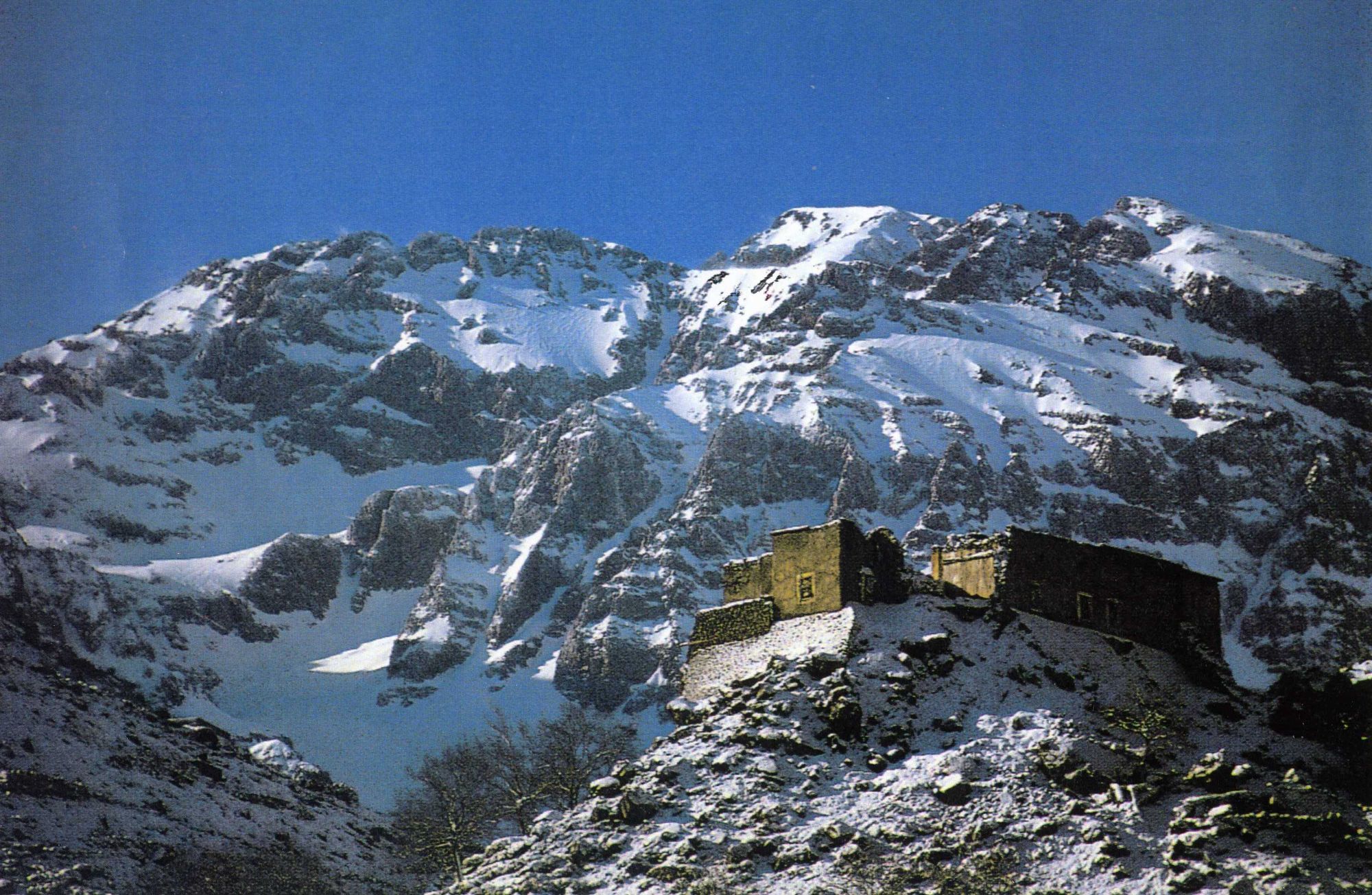
Mike first caught sight of the Kasbah du Toubkal in 1978, while trekking in the Atlas Mountains. It was the former summer home of a local chief, but had been abandoned for decades and fallen into disrepair.
“I was trying to earn a living without working in an office,” he says. “So I was running adventure holidays out of a Land Rover for about 10 years. We used a guide in Imlil known as Hajj Maurice. I worked with him over a 10 to 12 year period, looking up at the ruin of the kasbah from his house.

“Then my brother came out on a trip in 1989 and saw it. He’d read an article about the previous king, Hassan II, who had made a royal decree that inward investment would now be easy. On the basis of that, Chris, who comes from a business background in London, suggested we try and buy the ruin. As they say, the rest is history.”
One of the hardest parts of the project, Mike says, was getting the paperwork in place. It took five years. Meanwhile, one of the most difficult aspects of the build was transporting all the materials onsite up a steep rough track; heavy loads which were carried by mules and men.

Work was slow, done by hand in the traditional manner—progressing whenever investment allowed. Hajj Maurice project-managed, using builders and labourers from the nearby villages. Meanwhile, John Bothamley, a British architect, was drawn to the project and created a design that prioritised high levels of insulation and low energy consumption.


“We opened in 1995 with no en-suite bedrooms, just on the original kasbah with very basic facilities,” Mike says. “It didn’t have electricity because there was no electricity in Imlil and the surrounding villages then. It had running water; toilets, hot water and showers for school groups, who were our main clientele back then.”
By 1998, electricity had come to Kasbah du Toubkal and the surrounding villages. By 2000, tourist numbers to Morocco had begun to increase, and new en-suite rooms were built at the kasbah, to cater to demand for boutique accommodation.
But in 2023, disaster struck—an earthquake of 6.8 magnitude.
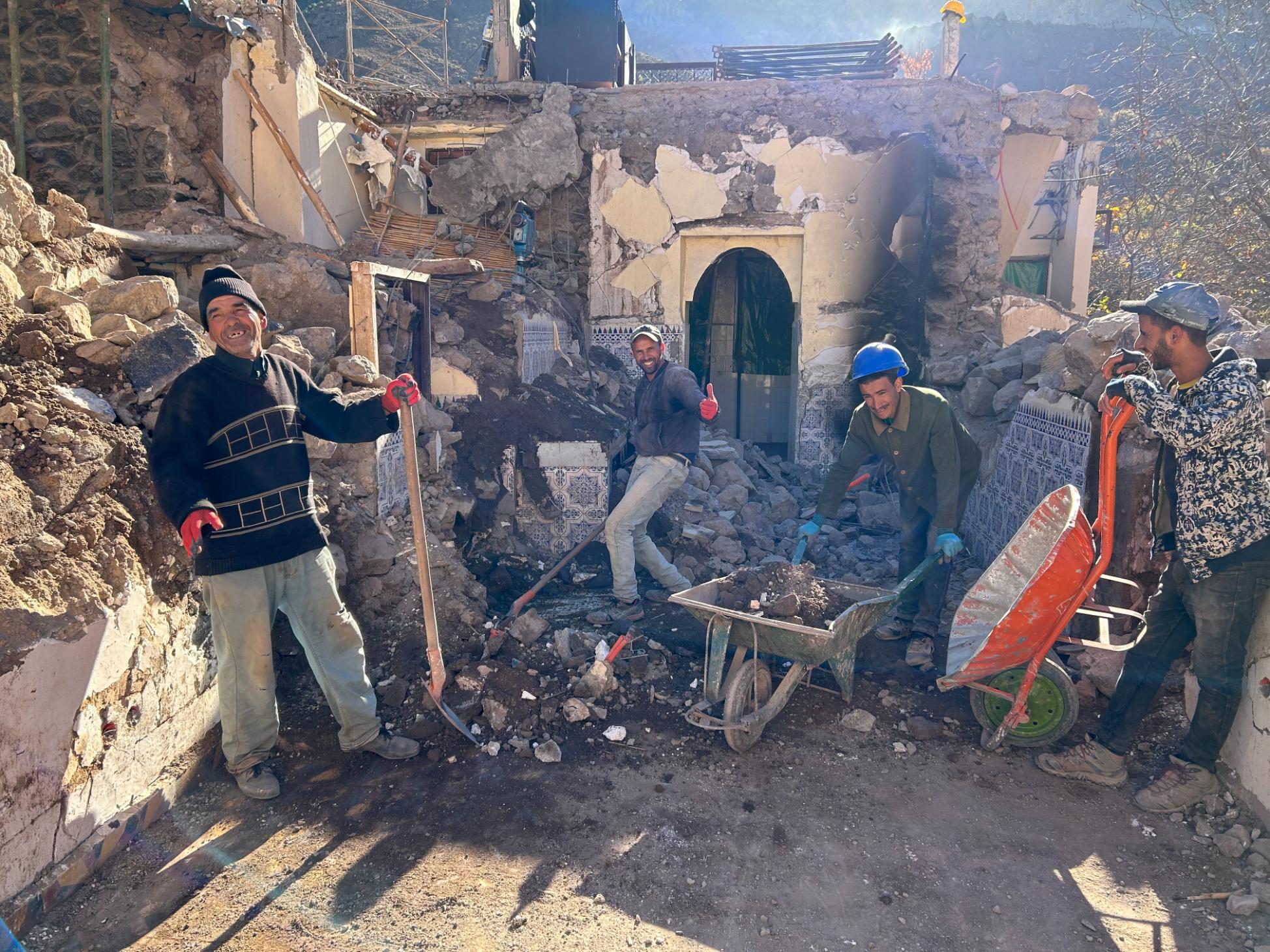
“It was a disaster for the region. Many people I know personally died or were injured in it. Fortunately none of our staff or guests were hurt,” Mike says. “Imlil was relatively untouched. But the old kasbah, which was built on the original foundations, came down. It was sufficiently damaged that it was obvious we would have to demolish it.”
This was a process that took months, as it had to be done by hand. However, Mike views it in a positive light.
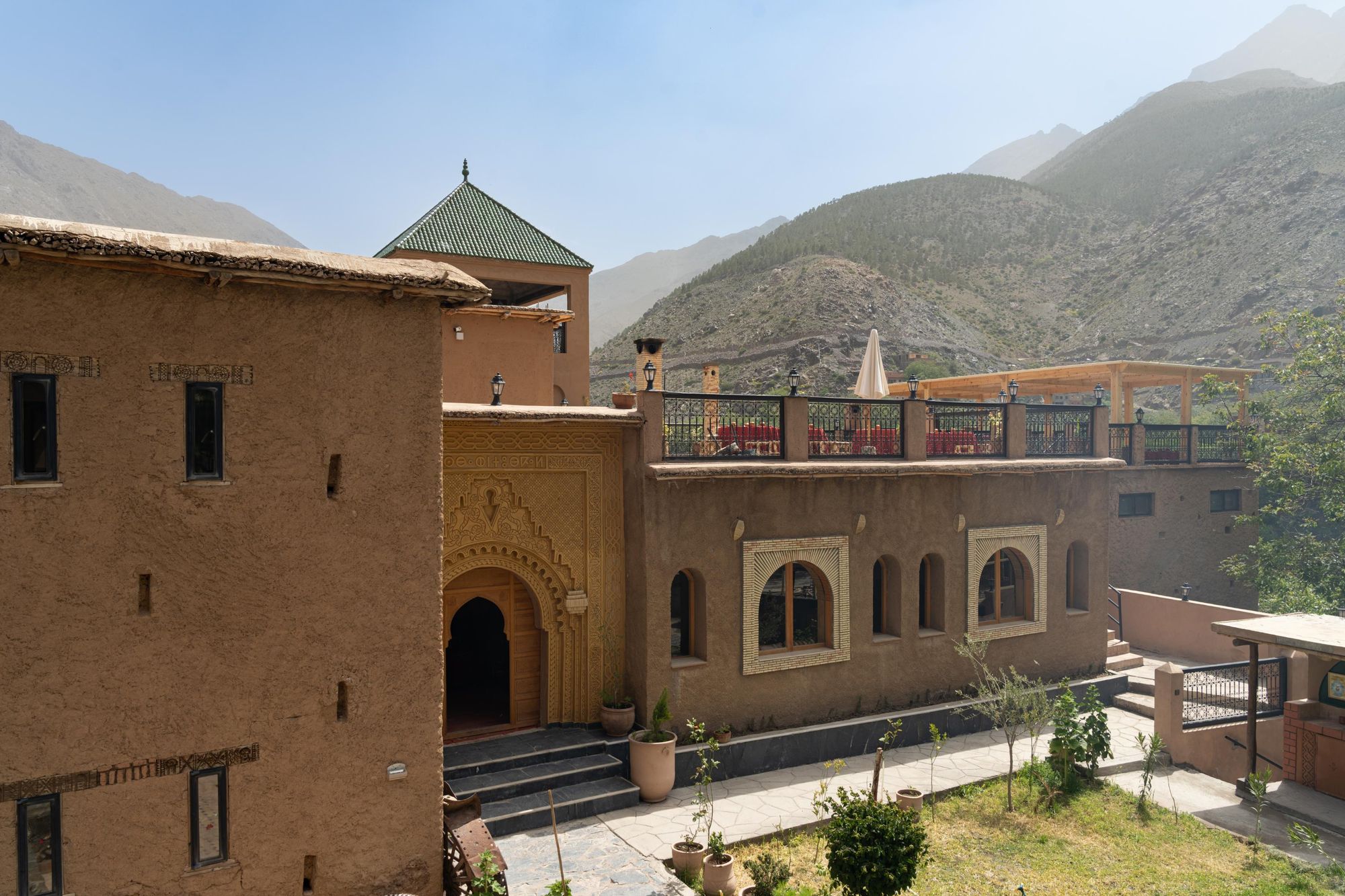
“In many ways, the earthquake gave us the chance to build back better,” he says. “The whole kasbah was redesigned with more arches and much lighter. The student-type rooms weren't rebuilt, but we now have 18 en-suite rooms and a swimming pool.
“The swimming pool needed civil engineering to be built, because it's hanging off the edge of the hillside. It consists of sand, cement and metal reinforcing bars, all of which is very, very heavy and comes in by mule or man. When you see it, it's incredible really.”
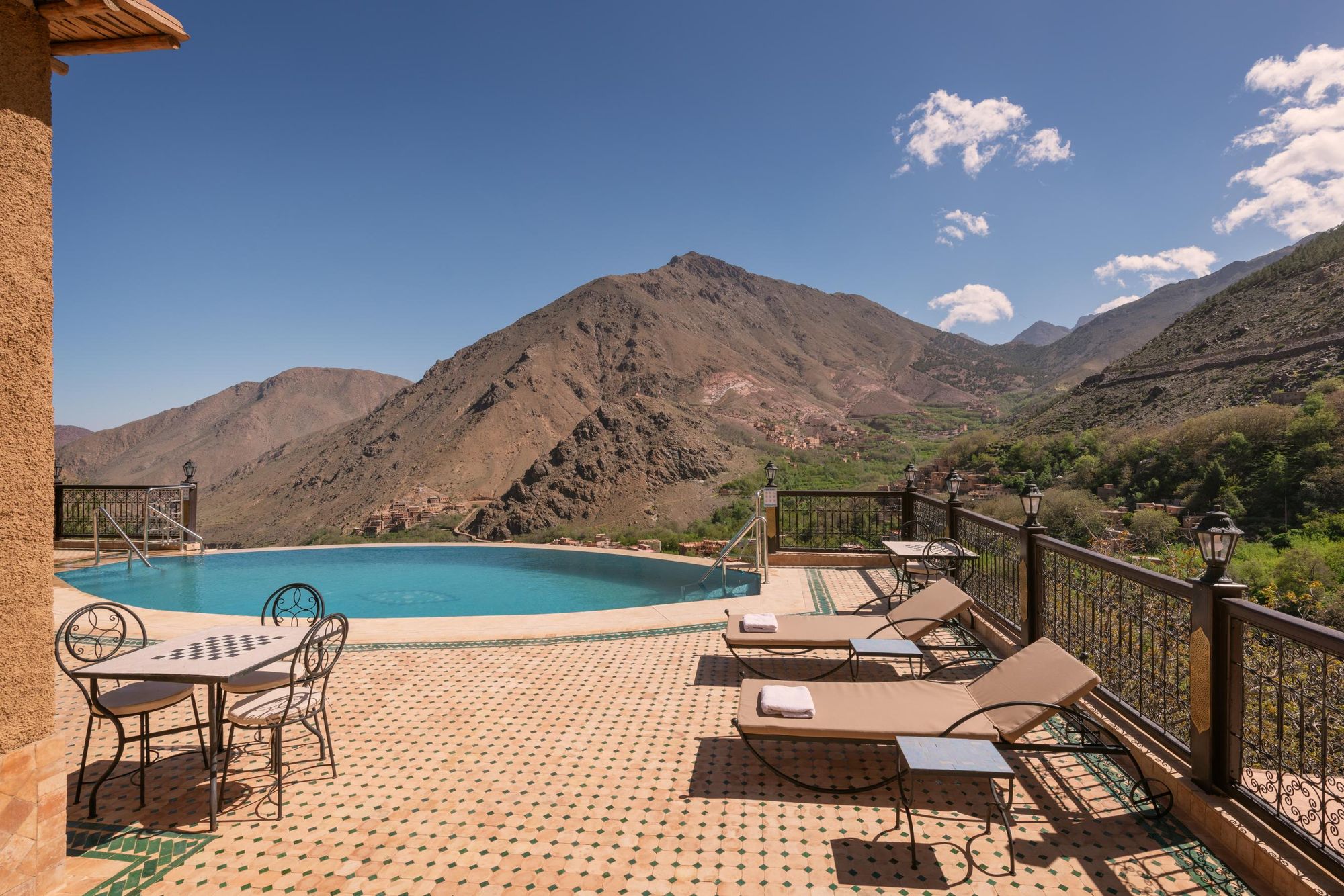
Working with the Local Community
Mike never conceived of Kasbah du Toubkal as a luxury hotel with the sole purpose of generating profit. Before beginning the build, he and his company created a ‘vision document’ for the building. In it, they vowed to be a “flagship development for sustainable tourism in a fragile mountain environment, and to “contribute to the enhancement, viability and vitality of the life of the local community”.
This really began in 1998, when Martin Scorsese used Kasbah du Toubkal as a shooting location for the film Kundun. Instead of accepting the fee, Mike donated it to the villagers of Imlil, to be spent as they wished.
The Kasbah du Toubkal employs 34 members of staff from nearby Imlil—preventing them from having to leave their families to find work further afield. It also employs numerous freelance guides and muleteers. Food, furniture, soft furnishings and building materials are all locally sourced, making for a large trickle down effect.
But this is only scratching the surface of the kasbah’s involvement with the local community. This really began in 1998, when Martin Scorsese used Kasbah du Toubkal as a shooting location for the film Kundun. Instead of accepting the fee, Mike donated it to the villagers of Imlil, to be spent as they wished.
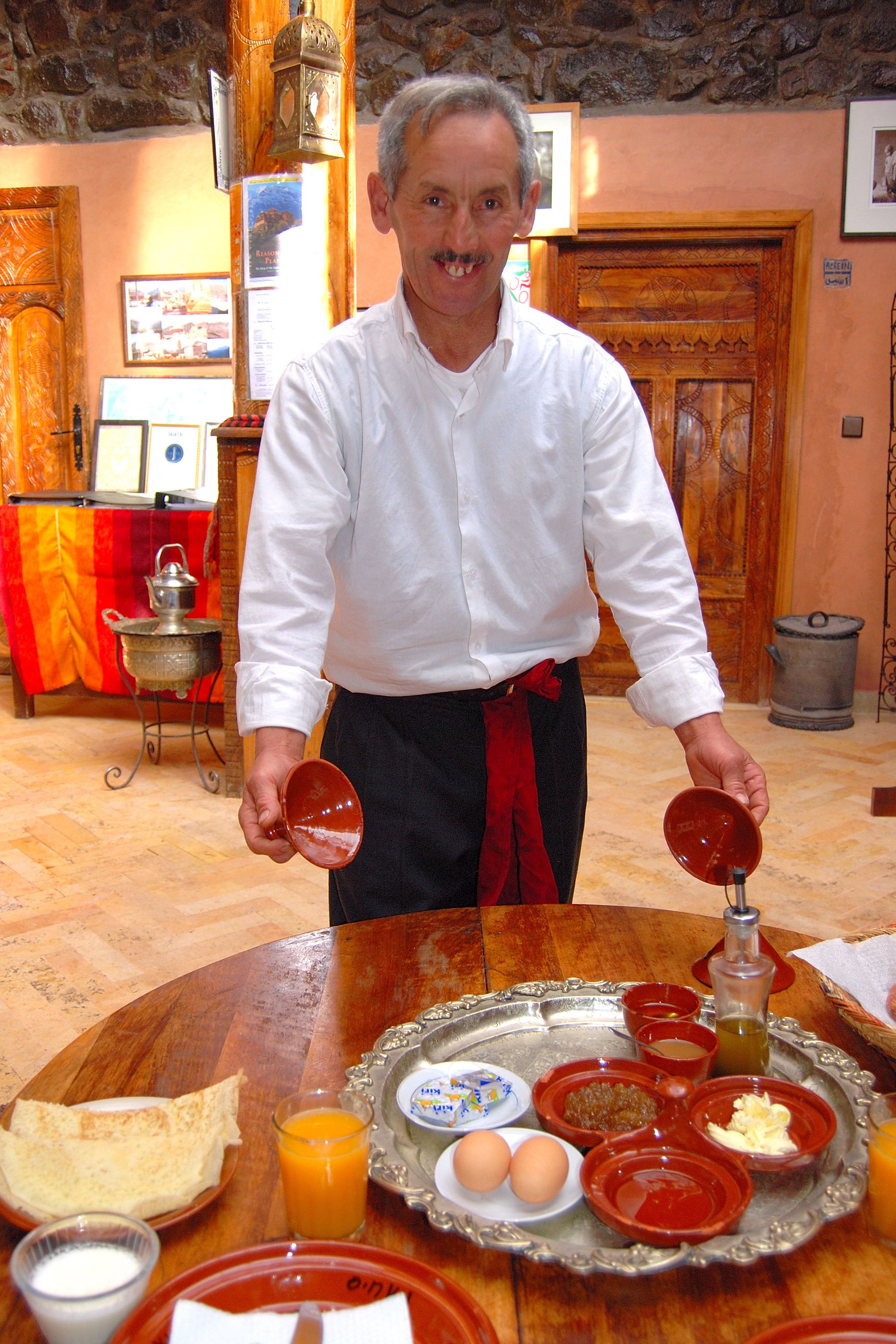

A community organisation, The Association of the Valleys of Imlil, was duly formed to help manage the Kundun money, and help coordinate future development initiatives. The first project was to provide an ambulance and driver for this remote region, as lack of transport to the nearby town of Asni and Marrakech resulted in a number of deaths in the preceding years, many during childbirth. With the ambulance, accessing emergency medical care became much easier.
Subsequent projects included the building of a community hammam, the creation of a hardship fund and the construction of a boarding house in Asni to provide accommodation for children attending secondary school, among others.
The Association of the Valleys of Imlil is now funded by a 5% surcharge added to bills at the Kasbah du Toubkal. Booking a stay there means you can be assured your tourist dollars are going to benefit the local community.
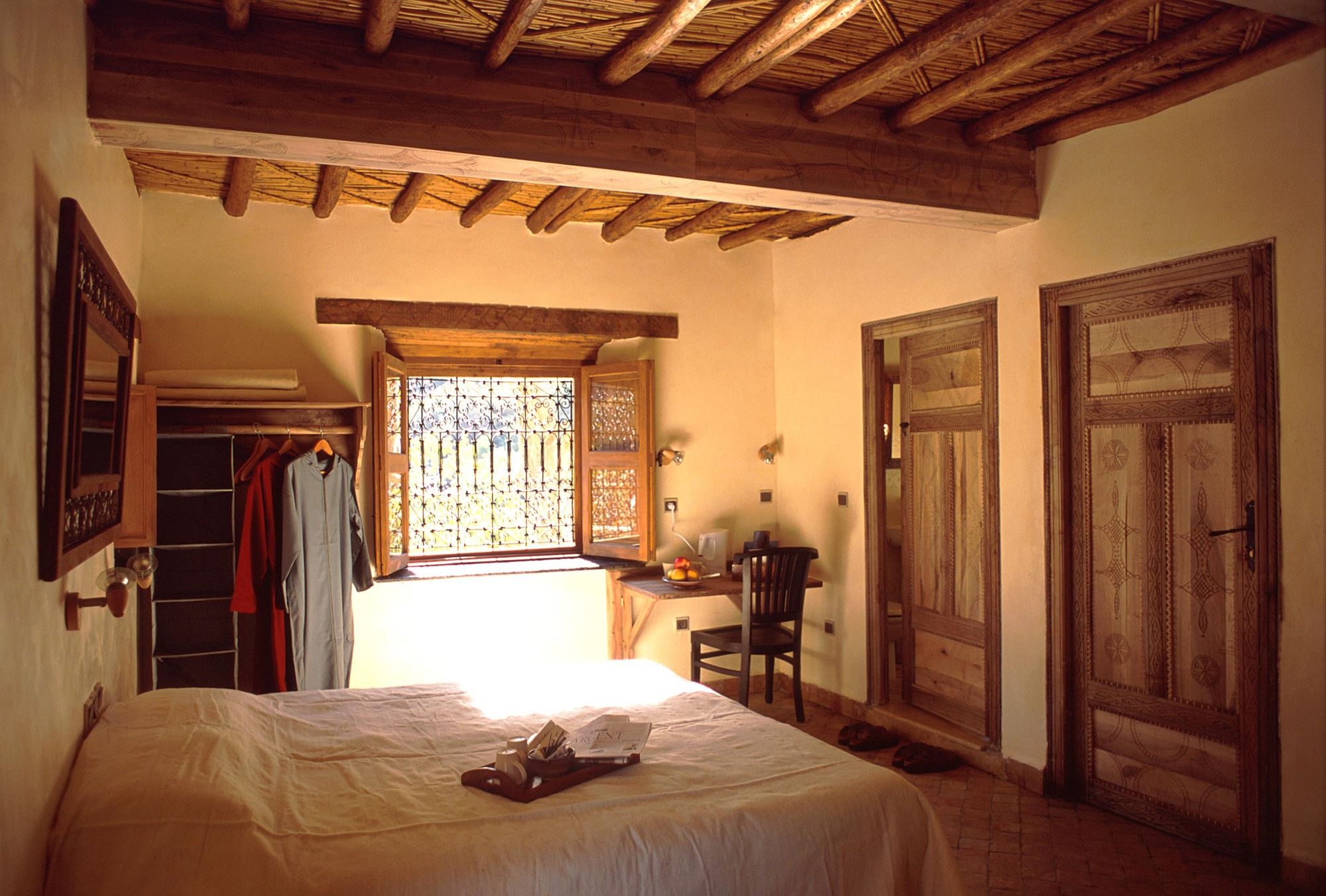
“Some people give us credit for developing Imlil,” Mike says. “We might have been a little bit of a catalyst, but obviously the Moroccan government was the one that decided to electrify all the villages. So it's completely changed. Mobile phone technology and the internet has provided lots of people with the opportunity to work in an international area.

“When I first came here in the 70s, there was no electricity, no telephones. No houses had running water in them. The whole of society was very poor, really. One thing that's very obvious when you go further afield is how good tourism has been to the development of the Imlil Valley.”
Education for All
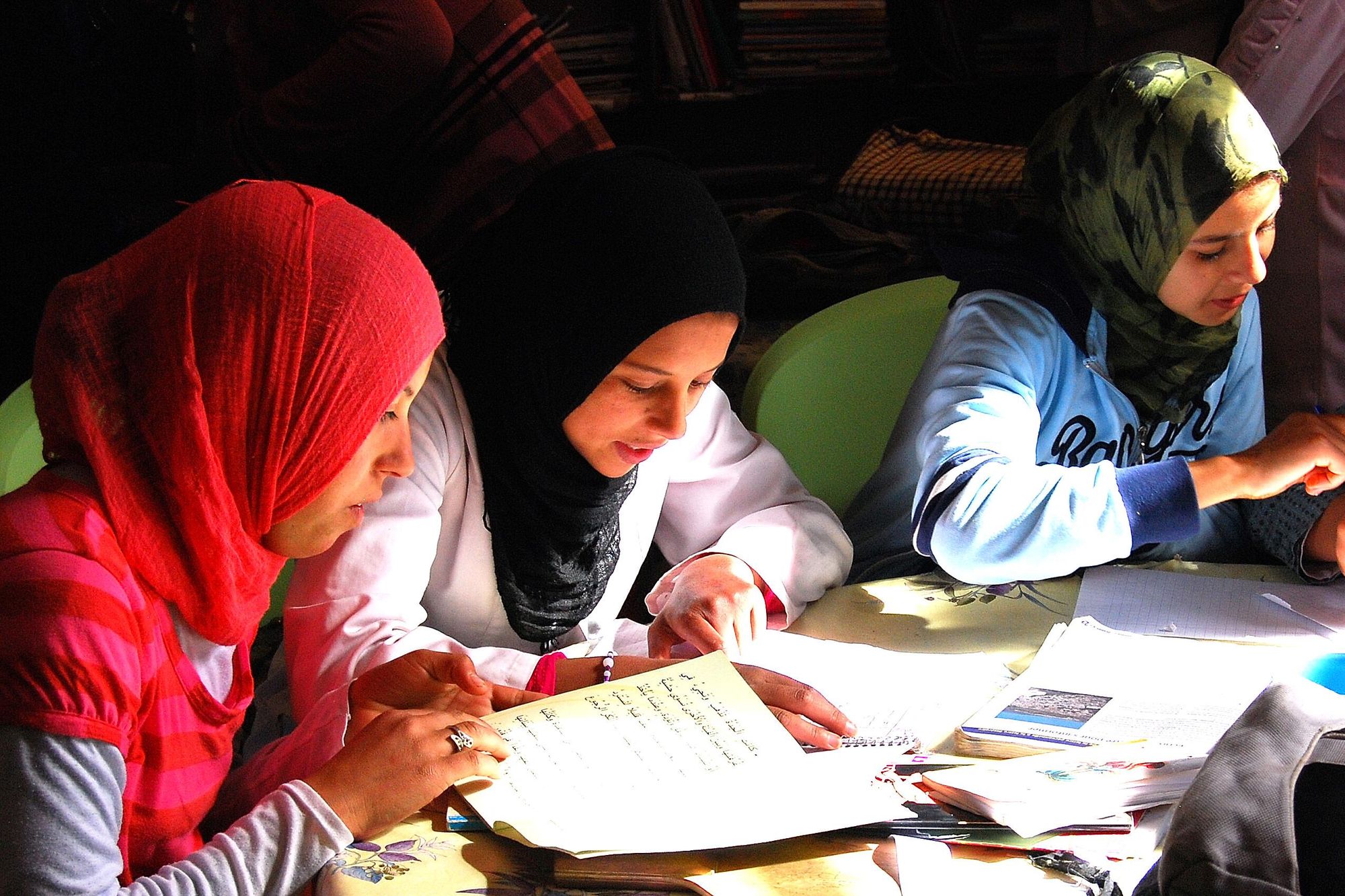
Mike’s biggest achievement—for which he was awarded an MBE in 2019—is the development of Education for All, a charity dedicated to helping girls from the rural High Atlas Mountains get an education.
The idea for Education for All started when Mike met John Woods, the founder of Room to Read literacy charity, when he came to stay at the Kasbah. Inspired by his story, Mike made a donation to the charity. But he wanted to do more.
We started a program to help educate girls to secondary level
“I started a dining club and raised money hoping we could use it to fund a project with Room to Read. We raised between £50,000 and £70,000, but John Woods didn’t get involved—he said we should create something useful for ourselves.”
“It was obvious to me that you need to educate girls. Educate the girl, you educate the next generation. They were the ones in the rural areas who weren't getting educated at secondary level. So we started a program to help educate girls to secondary level.”
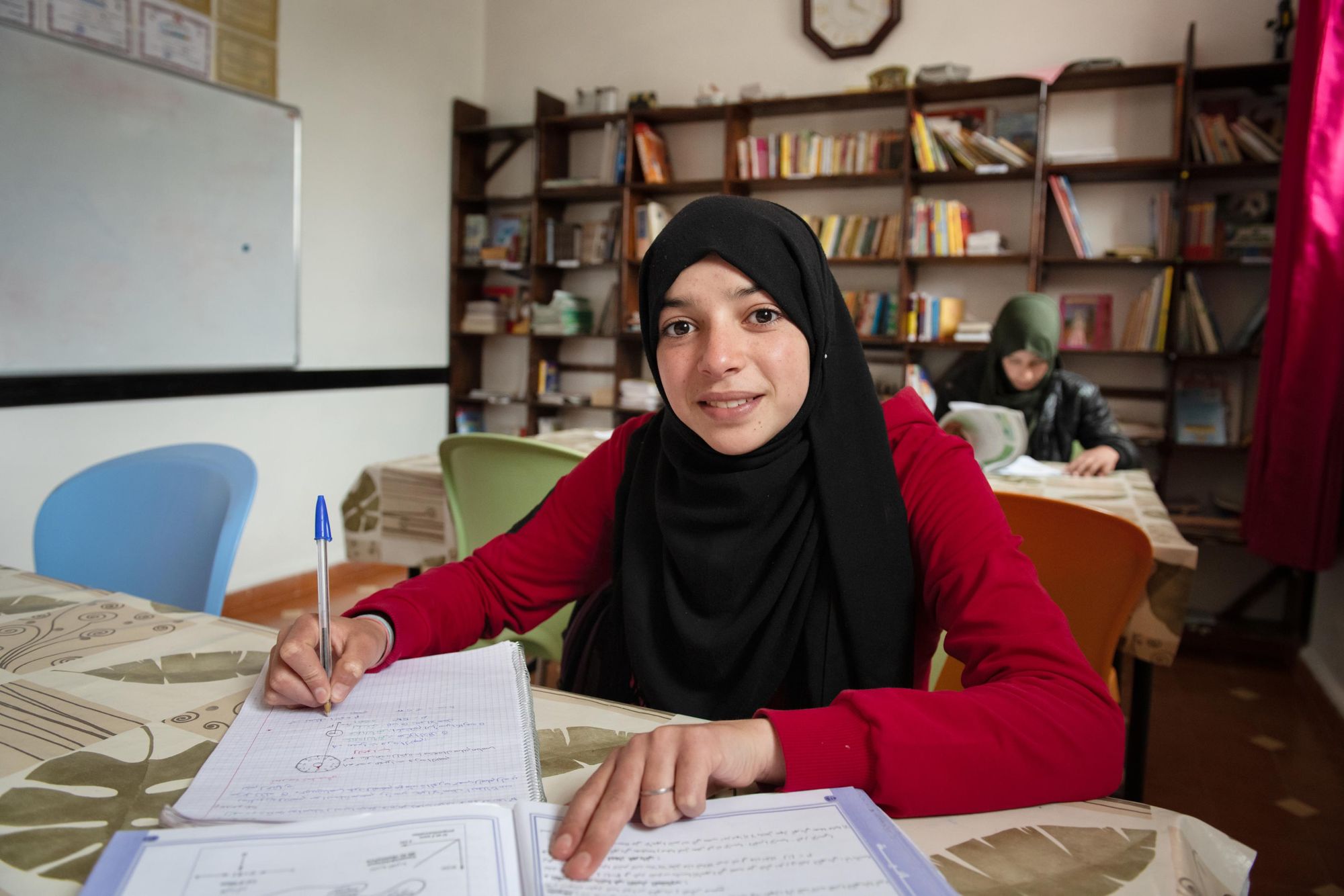
In Morocco, between 30–40% of Moroccan girls and women are illiterate, which hinders women’s ability to work and makes them vulnerable to exploitation. This is in large part due to geographical isolation—for girls living in the rural High Atlas, there are no secondary schools nearby, and lack of transportation and insufficient funds are barriers to travelling further afield.
It just shows that if you start something, how big it can grow
Education for All has addressed the problem by building boarding houses for girls near secondary schools, which they can stay in for free. Food, access to books and pastoral care is also provided. Since 2007, 677 girls have been through Education for All’s six-year programme. Between 2013 and 2024, 203 girls have enrolled in university—10 are currently attending on full scholarships, while three are pursuing postgraduate education.
The money travellers pay to stay at Kasbah du Toubkal helps fund Education for All, alongside private donations.
“Whilst I love the kasbah, Education for All has turned out to be the main legacy. It just shows that if you start something, how big it can grow,” Mike says. “I liken it to the acorn that turned into the oak. We might have started with the kasbah, but Education for All shows that we’ll continue to do greater things now and in the future.”
Inspired? Visit Kasbah du Toubkal with us on our Hike Morocco's Atlas Mountains and Sleep in a Kasbah adventure, or check out our other Premium Adventures.


